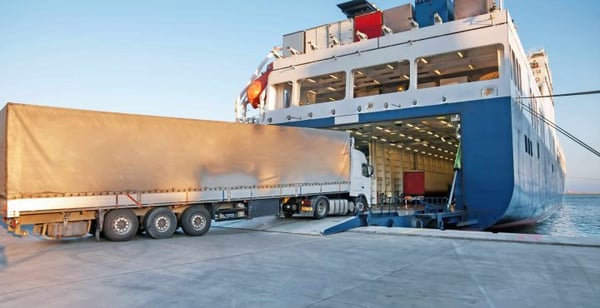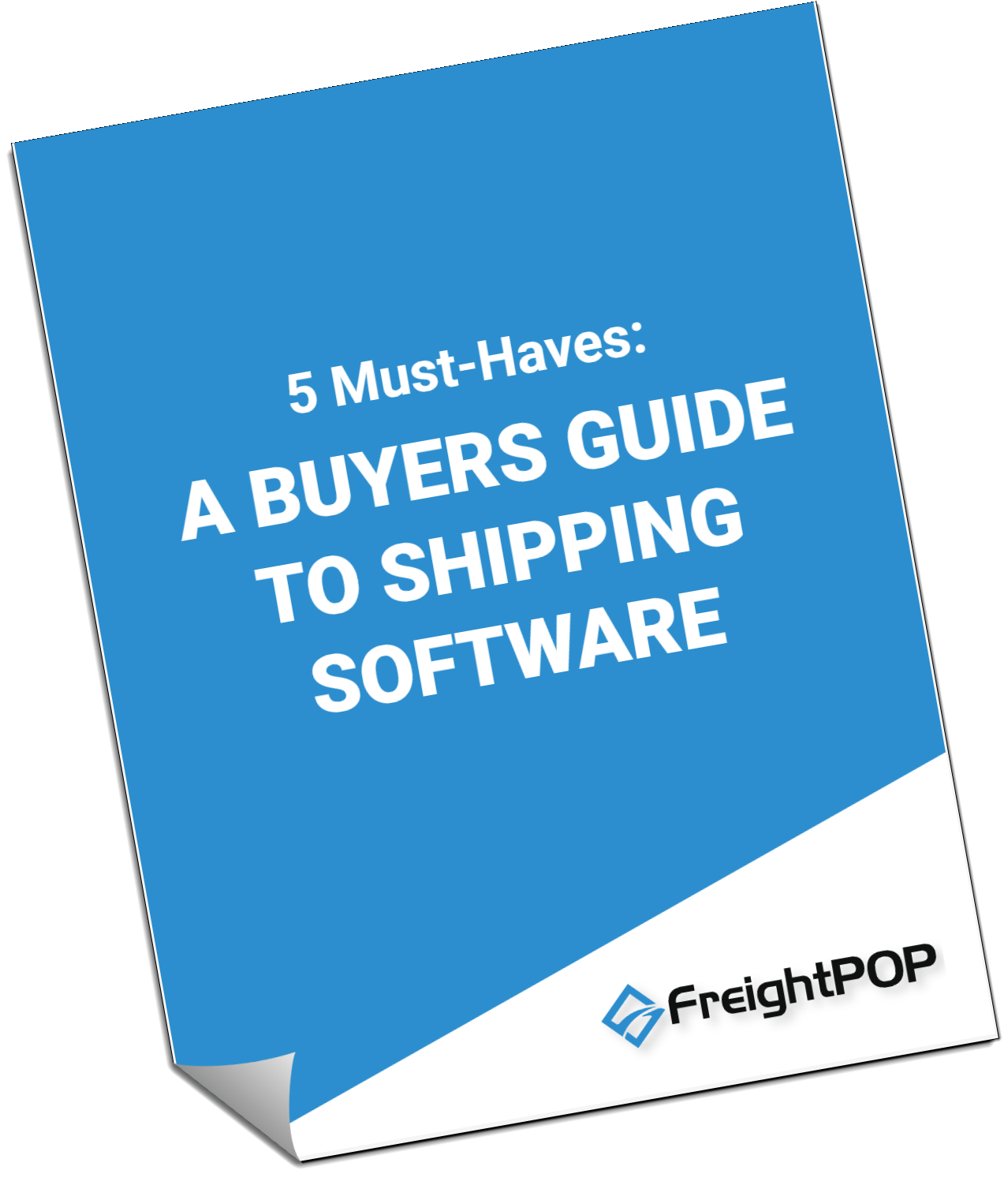Buyer's Guide To Transportation Management Systems
5 Must-Haves to Choosing the Right TMS for Your Business
What you Need to Know About Buying A Transportation Management System
Shipping is costly, time-consuming, and sometimes difficult to manage—and it's getting even more complicated as capacity tightens, and rates continue to rise. A Transportation Management System (TMS) can assist shippers, by managing the challenges we all face as shippers by managing logistics challenges.
Are you on the hunt for a powerful but simple TMS solution to scale with your company?
Maybe you have a list of options or features you need and you're wondering how to separate the hype from reality.
Logistics management has many moving parts. You must be able to connect the lines of communication between order placement, fulfillment, shipment scheduling and management, and loading and routing to make sure that products arrive at their destination on time and in good condition.
Without a clear view of how each piece is operating, one part can fail, leaving the rest to hold the bag. An effective TMS can help solve these challenges.
Shipping shouldn’t be complicated, but selecting, implementing, and adopting a new Shipping & Logistics software can be a bit overwhelming.
In the area of TMS, an effective platform must be versatile enough to manage conventional challenges, while flexible enough to solve specific problems. The software should link each step of the order management and shipping process while also handling robust reporting and billing issues.
Flexibility & Functionality
You may be a Small-to-Medium sized business (SMB) shipper that struggles with organizing spreadsheets, calling multiple carriers for quotes, and handling manual paperwork. Or you may be an Enterprise-sized shipper looking to replace your outdated TMS system with high maintenance fees, limited carrier integrations, and mediocre functionality.
If your business is like most others, you are continually making changes and want to have the ability to scale accordingly. You should be able to make the changes to your TMS with minimal time and fees.
Evaluation Criteria: Can it scale & Keep Up?
The TMS should allow you to use your current carriers and negotiated rates. When you renegotiate your rates, it should automatically update in real-time to the carriers’ servers.
- Online delivery keyboard button for package shipping concept. Open box line icon key in orange color.
Does it allow for multiple users, locations and carrier accounts? You want to ensure that you will have the functionality you need or may need in the future. - Does the TMS integrate with your current/future internal systems and 3rd- party systems? This will help you realize all the tangible ways to lower your freight spend, improve service levels, and reduce your bottom-line.
- Does the TMS provider have reasonable fees and timelines to solve your customization requirements? Customization may be needed to accommodate your company’s specific needs from time to time.

Managing Shipments with an "All-In-One" System that ships Across All Modes
Consider who your inbound and outbound carriers are and where you ship.
Here are the most common modes you should make sure your software can handle.
Parcel: Shipping small packages using carriers that include FedEx, UPS, DHL, USPS, TNT, OnTrack, and others.
LTL (Less than truckload): Shipping less than truckload. In this case, one or multiple pallets or skids are shipped.
Air Freight: Shipping larger and heavier packages including pallets with next day, 2- day or 3-day delivery.
FTL (Truckload): Companies that ship full truckloads at a time. In some cases, truckloads are used to ship multiple LTL shipments and save money. The truckload may be dispatched and make a few stops before its gets to its final destination. Most truckload carriers also offer intermodal services.
Intermodal: Companies that ship containers that will travel over the road and via rail use intermodal services. This is a less expensive option than truckload, but it may take a few days longer to arrive at its destination.
International Air Freight: Most international airfreight is handled by freight forwarders. These companies contract directly with the airlines and use the airlines’ cargo services to ship your heavier shipments that include pallets or skids.
 Ocean: Freight that is very heavy and too expensive to ship via air is normally shipped via ocean. Carriers offer ways to ship pallets or full containers. Since its transported via a ship on the ocean, this may take up to 30 days to arrive at its destination, but may cost up to 70% less than air freight.
Ocean: Freight that is very heavy and too expensive to ship via air is normally shipped via ocean. Carriers offer ways to ship pallets or full containers. Since its transported via a ship on the ocean, this may take up to 30 days to arrive at its destination, but may cost up to 70% less than air freight.
Evaluation Criteria: Do they understand my industry
Shipping is full of challenges that only a shipper may have experienced. They need to understand the problems you have to resolve- anything from delays, lost shipments, damages, assessorials, business/customer rules, budgets, and unexpected changes.
- Make sure you pick shipping software that can handle all your current modes and more.
- Does the TMS give you the ability to ship across multiple carriers and various modes? If not, you’ll lose on savings and efficiency.

Logistics Workflow Automation
Does the TMS provide the crucial functionality for your business to remain competitive?
Shipping becomes more accurate, and customers are less impacted by shipping errors. Look for one that automates most, if not all, of your shipping processes.
A few key benefits to consider:
Find Best Rates Based on Service Level
Make sure the software you choose can provide the rate quotes for your shipments in one window, side by side, for all your carriers and across modes for easy comparison. The best decisions are made when you have the right information presented simply, and in real time.
Batch Shipping
Batch shipping enables you to process hundreds or thousands of shipments in just minutes.
Print Shipping Labels, BOLs, AWBs, etc.
All shipments require various documents to be filled out and printed. Make sure the software you chose can print the labels and documents required by the carriers and by customs.
Centralized Tracking
Tracking shipments is a crucial part of the process. Having a single place where you can get real-time tracking saves you and your team valuable time.
Powerful Reporting & Analytics
This can help you manage your carrier relationships more effectively. Reporting will help you make better-informed business decisions quicker. Reports should be available and can be customized for various departments within your company.
Freight Invoice Auditing
This can save hundreds of thousands of dollars by simply auditing your invoices for “promised” rates. You can pay a consultant on a gain-share basis to audit your invoices or you can use a TMS that has this feature built-in.
Internal and External Communication
The TMS should facilitate communication to other departments regarding shipping information. Configure alerts, notifications and scheduled reports to others as needed. Let the TMS help you streamline your communication.
Evaluation Criteria: Does it optimize your shipping process?
A TMS is meant to automate parts of, or the entire, shipping and logistics process. TMS automation will increase productivity and efficiencies. It will dramatically improve inaccuracies and redundancies in a manual process.
- Does the TMS provide real-time alerts and notifications to track shipments? Having this feature will save you hours so you don’t have to manually check status updates on tracking.
- Does your TMS offer features to help make sure you’re paying the correct invoice amounts?
Don’t just pay the freight bill, but rather settle the transaction! It’s a fact that carriers don’t always invoice accurately.
Either way, make sure you are being billed the correct rate. Also, most carriers have delivery guarantees that when not met should result in a refund or reduction in your rate, but you must know and you must ask. A good TMS should automate all this for you.

Implementation And Onboarding
As you may have experienced, a TMS was typically offered with a hefty price tag. Along with that, you were required to use their on-premise software, with additional equipment, integration, and service fees. It sometimes takes months to integrate a traditional TMS. Nobody has that kind of time today.
The TMS of today has largely moved into the cloud and as a result, provides more security and responsiveness. With a SaaS solution, there is no need to download anything- simply connect to their secure servers through the internet.
With the technology we have now, there is no reason why set up and implementation should take more than a few days.
Evaluation Criteria: Easy to use, implement, and support?
Your software should be as easy as mobile apps. Make sure you get a TMS that has a great user interface. The best software does not require much training as it’s intuitive and mimics your desired workflows. Nobody likes cluttered and noisy screens.
How much involvement will it take from your IT or any other department? If you know integrations will be required, it is best to start talking with your IT department to avoid resource delays. Some integration can take a week to 60 days depending on the availability of your internal resources.
Can you gain instant access from ANY device with NO installs? There should be NO hardware, and NO on-site setup required.
Does the TMS offer incredible customer and technical support? Services response times are important to evaluate in the case that you face any kind of issue with the TMS. A good support team will be able to respond in just a few hours.



